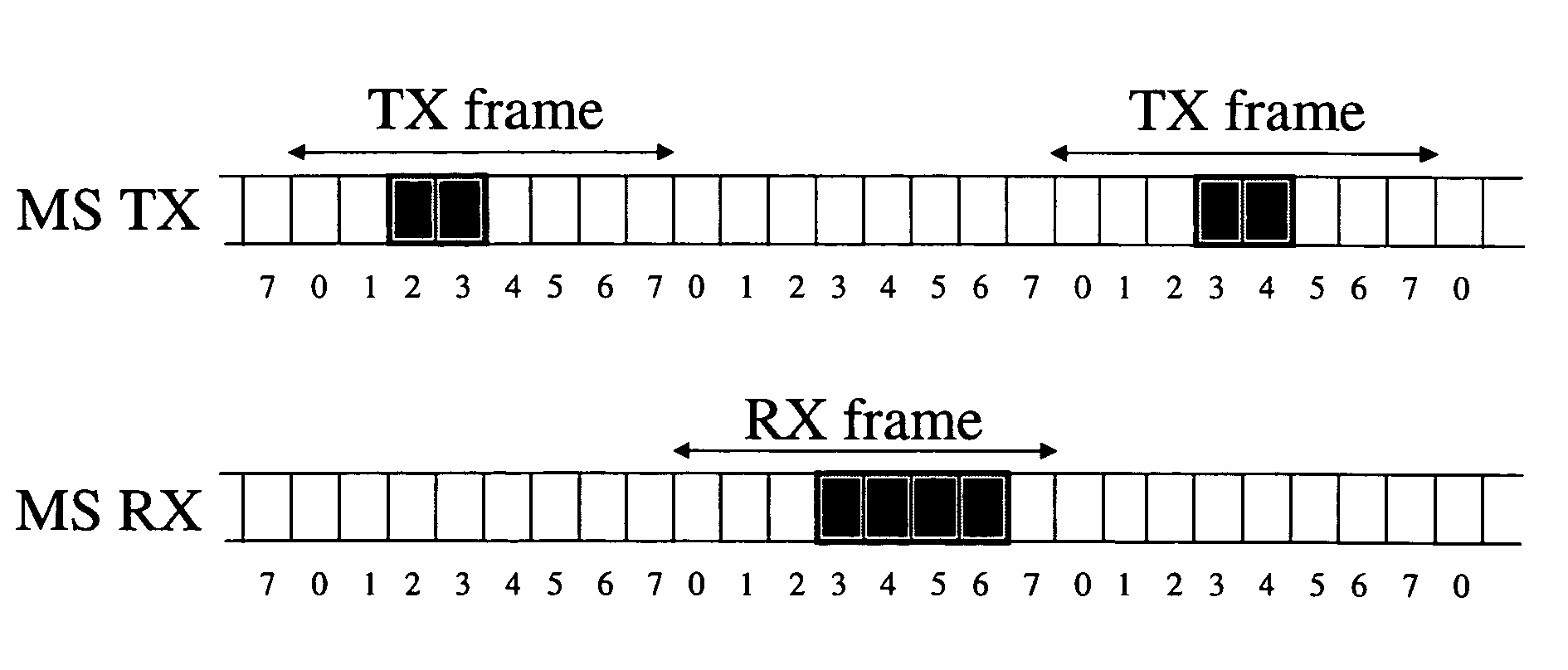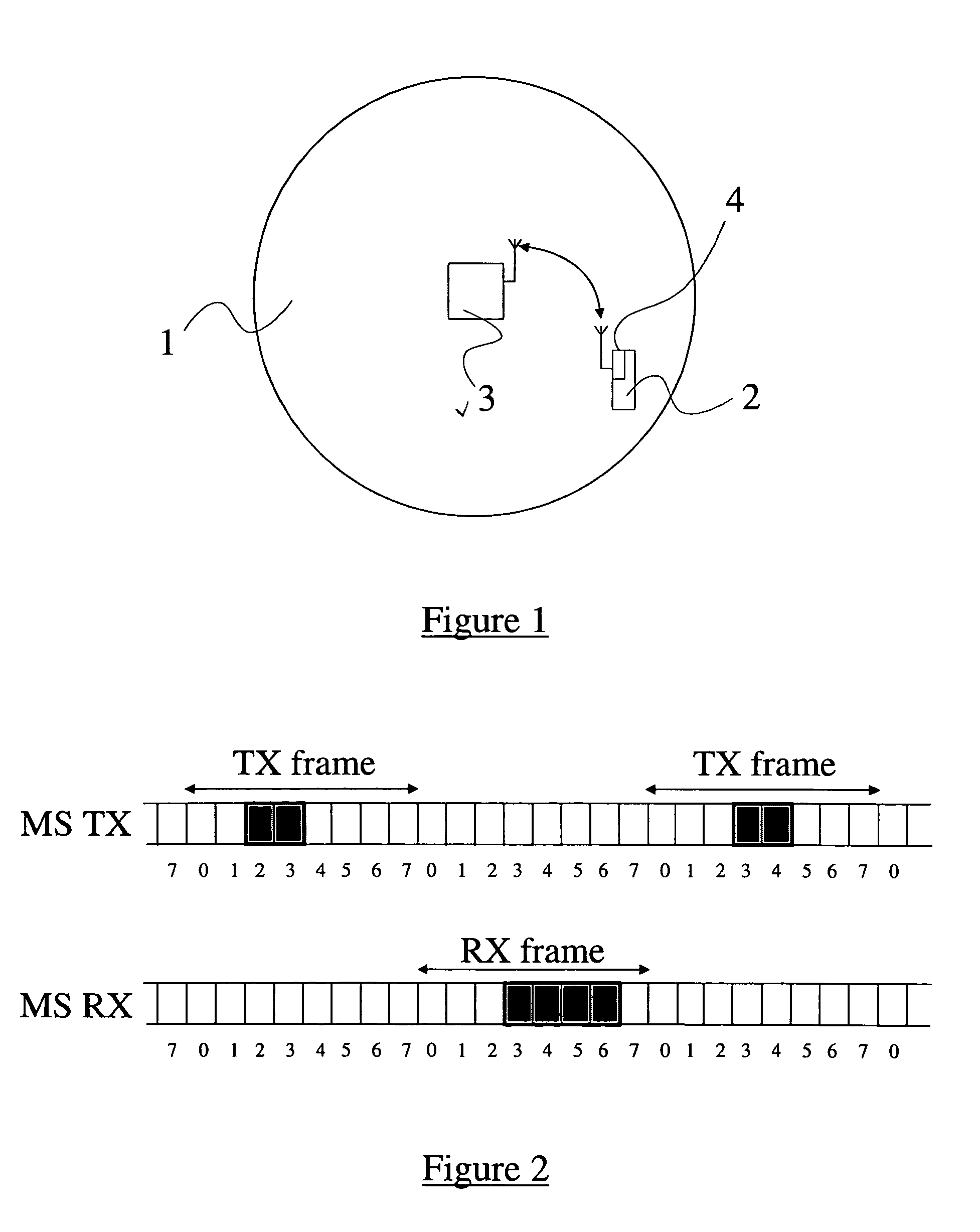Time division multiple access radio systems
a radio system and time division technology, applied in multiplex communication, data switching networks, wireless commuication services, etc., can solve the problems of overlap between uplink and downlink slots in time, and achieve the effect of reducing power consumption, reducing power losses, and simplifying the implementation of radio module power amplifiers
- Summary
- Abstract
- Description
- Claims
- Application Information
AI Technical Summary
Benefits of technology
Problems solved by technology
Method used
Image
Examples
Embodiment Construction
[0015]There is illustrated in FIG. 1 a cell 1 of a cellular mobile telephone network. A mobile station (or telephone) 2 located within the cell 1 communicates with a base station (BS) 3 of the cell. As has already been described above, when a call or data connection is made from the mobile station 2 to the BS 3 or vice versa, a downlink ‘channel’ and an uplink ‘channel’ are reserved to enable bi-directional communication to take place. Both of these channels are in the same frequency band and each consists of a plurality of time slots reserved in every other TDMA frame.
[0016]This is illustrated in FIG. 2 where the upper diagram illustrates the time slots (2 and 3) reserved for the uplink channel, i.e. for user data transmission from the MS 2 to the BSS 3, MS TX, and the lower diagram illustrates the time slots (3 to 6) reserved for the downlink channel, i.e. for user data reception by the MS 2, MS RX. The TDMA frames (TX and RX frames) of the uplink and downlink channels are interla...
PUM
 Login to View More
Login to View More Abstract
Description
Claims
Application Information
 Login to View More
Login to View More - R&D
- Intellectual Property
- Life Sciences
- Materials
- Tech Scout
- Unparalleled Data Quality
- Higher Quality Content
- 60% Fewer Hallucinations
Browse by: Latest US Patents, China's latest patents, Technical Efficacy Thesaurus, Application Domain, Technology Topic, Popular Technical Reports.
© 2025 PatSnap. All rights reserved.Legal|Privacy policy|Modern Slavery Act Transparency Statement|Sitemap|About US| Contact US: help@patsnap.com


